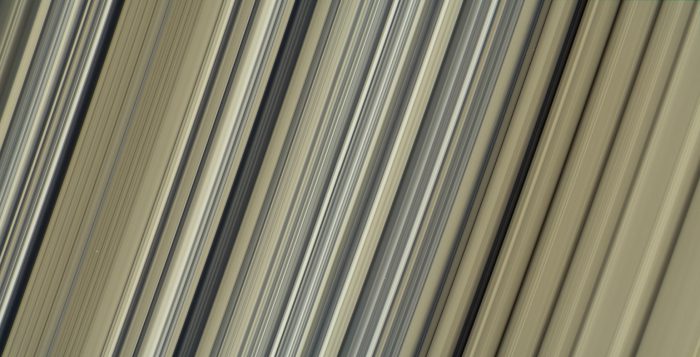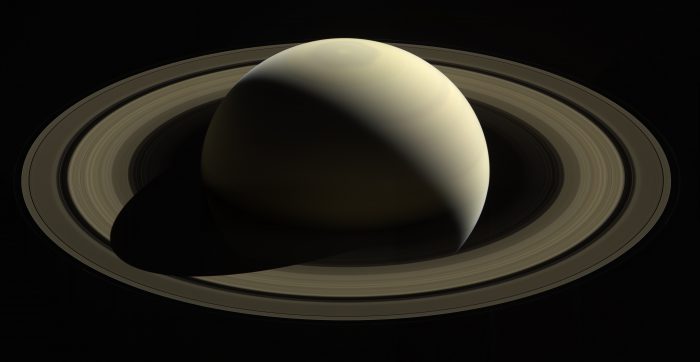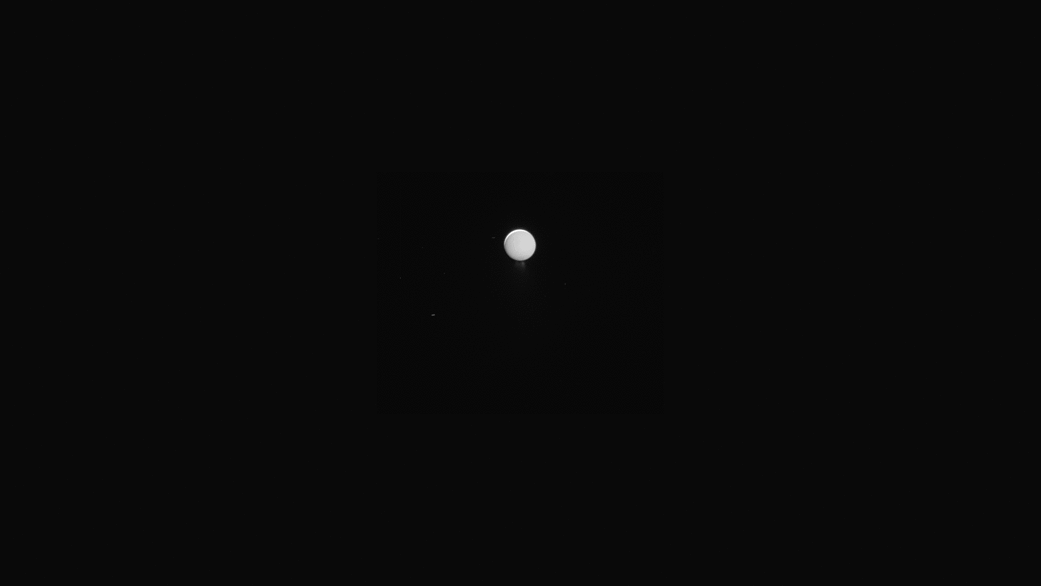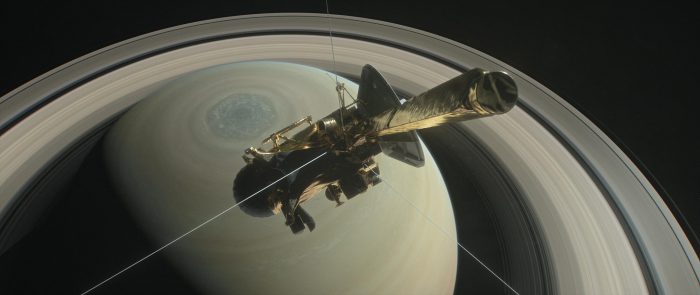We've written a bunch about NASA's Cassini space probe (including earlier this month). The reason? We love amazing pictures of planets and moons, and few photos are better than what Cassini has given us over the last year of so. Why? Well, it's only spent the last 13 years hanging around Saturn, the coolest looking planet we know.
But this Friday, that is all coming to an end. Cassini has run low on fuel and is completing its mission by crashing into the dense atmosphere of Saturn. NASA calls it the Grand Finale. And what a final act it has been!
One last show

(NASA/JPL-Caltech)
The Grand Finale has been a year-long series of close orbits (22 in total) around Saturn. The idea has been to give us a closer look at the rings than ever and it has delivered that and more. Above is one of Cassini's last and best shots of those rings. Unbelievable, right?
And here is Saturn from a distance for one last time before the probe dives toward the planet.

(NASA/JPL-Caltech)
A lord of more than the rings
Cassini has also opened up the world of Saturn's many moons. There's Saturn's largest moon, Titan, a unique candidate for life in the solar system outside Earth. Thanks to the Huygens probe (launched by Cassini), it has gone from being a hazy world of mystery to a land whose rocky, Mars-like surface we have now photographed and sampled up close.
But we want to leave you with a truly remarkable sight (something that we hinted in our last Saturn post on September 1st). Have a look at the gif below.

(NASA/JPL-Caltech)
What are you seeing? The Moon? Well, not our moon, but yes, a moon. It's another one of Saturn's moons called Enceladus. Focus on the bottom of the image. See that white haze bursting from its South Pole? This is a cryovolcano. And the stuff bursting from it? It's full of water vapour!
Despite its rocky surface, there is water under the surface of Enceladus. These makes it, along with Titan, one of the very few places in our solar system where microbial (very tiny) life might exist. Amazing, right? And how did we find out about this?
Yep. Cassini.
Wave goodbye?
When Cassini crashes into Saturn early Friday morning (EST), its explosion will be something that is next to impossible for anyone in North America to see. But that doesn't necessarily mean it will go unobserved.
As NASA scientist Linda Spilker told Sciencealert.com, "there's still some really great, really capable amateur ground astronomers [in the Southern Hemisphere] that have returned some beautiful images of Saturn." Perhaps someone will be fortunate enough to be looking in the right direction at the right time to see this wonderful probe's final moment?
Whether this moment is seen or not, there's no question that Cassini's stunning photos and research will live on for a long time to come. Thanks for everything—we owe you so much!
 An artist's impression of the probe Cassini making its final descent toward the surface of Saturn. (NASA/JPL-Caltech)
An artist's impression of the probe Cassini making its final descent toward the surface of Saturn. (NASA/JPL-Caltech)










very cool
I think we should go to Neptune. I wont to lock for aliens. Look for water. i wont earth.